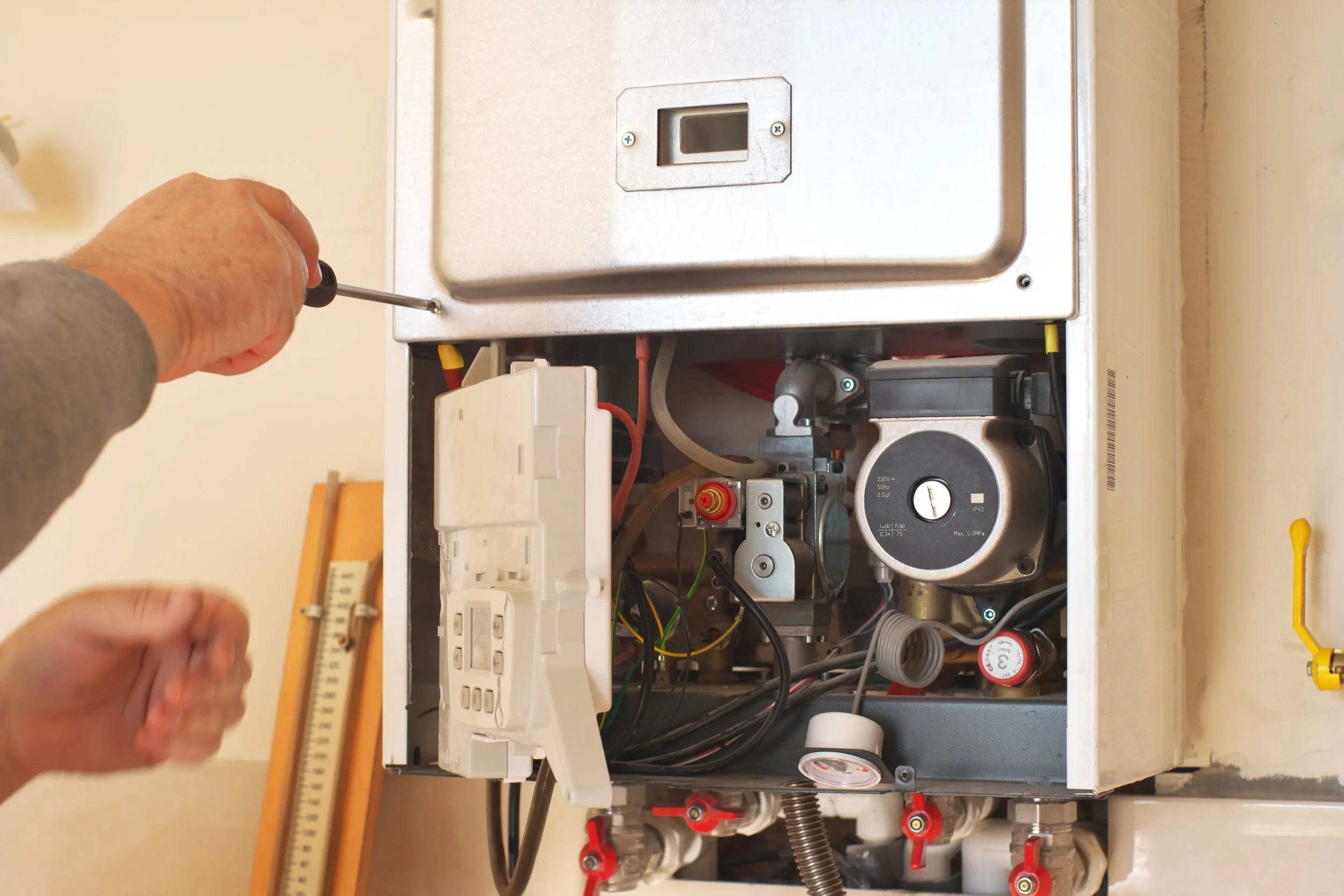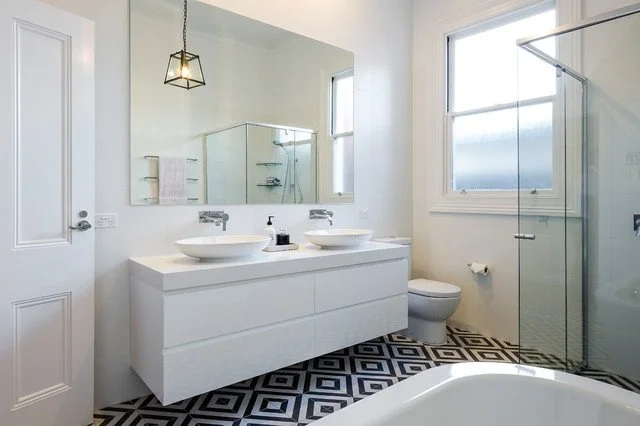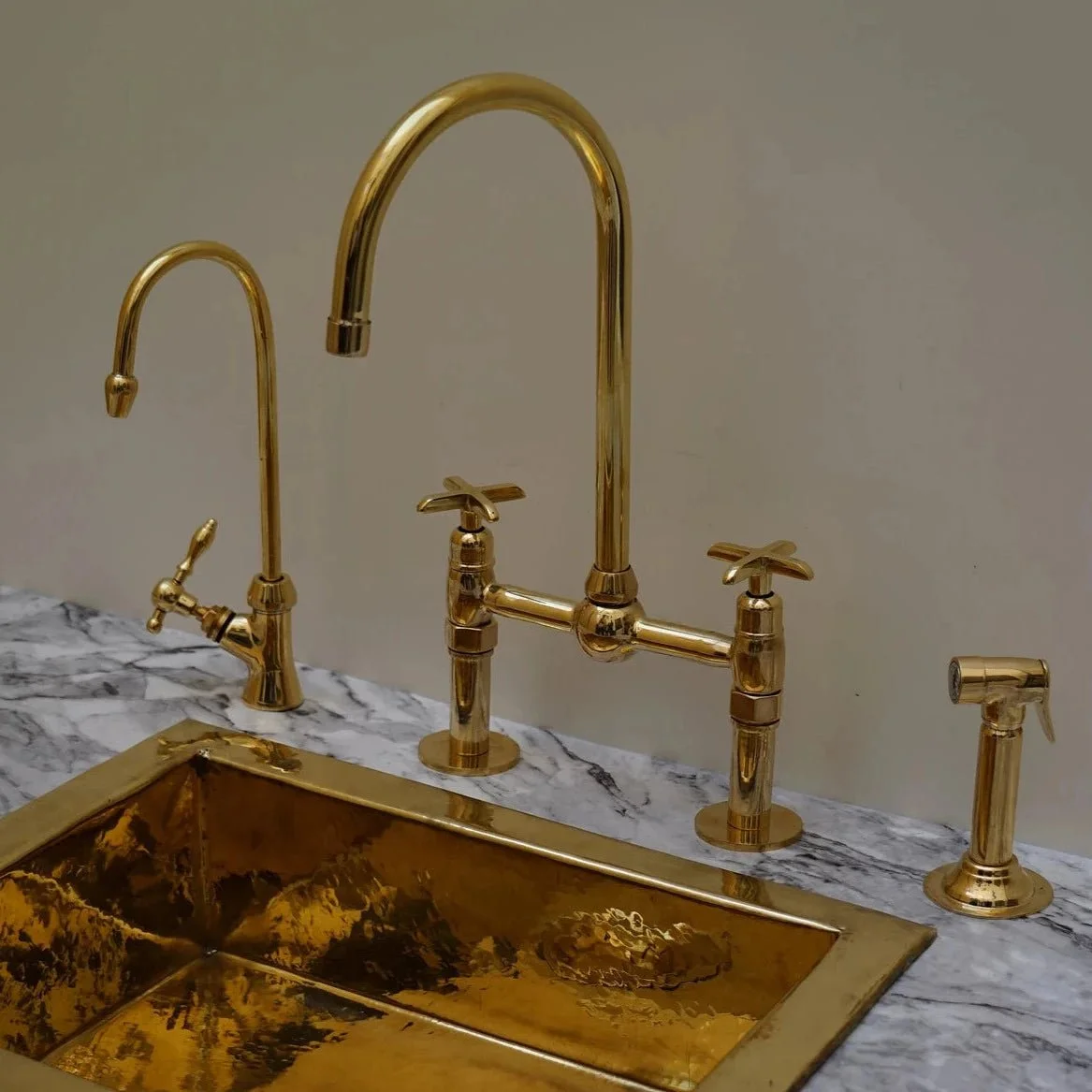When homeowners discover a water leak in their ceiling, it is crucial to address the issue promptly to prevent further damage. A water leak may indicate a variety of problems, ranging from damaged roofing to faulty plumbing. Identifying the source of the water leakage is the first step in resolving the issue. Plumbers are usually the professionals to call for interior water leaks, as they are equipped to diagnose and repair issues related to pipes, fixtures, and associated systems.
If the water leak is coming through the ceiling from an upper floor, the problem may be associated with the plumbing of fixtures like toilets, sinks, or bathtubs. In such situations, a licensed plumber should be contacted to assess and repair the leaking plumbing. On the other hand, if the leak originates from the roof or an attic space, a roofing contractor might be the right professional to call. Roofers specialize in identifying breaches or deteriorations in the roof that could allow water to enter the home.
In cases where the exact origin of the leak is unclear, or if multiple factors could be involved, homeowners might consider contacting a general contractor who can provide a comprehensive assessment and coordinate the necessary repairs.
General contractors have the expertise to oversee complex scenarios involving structural damage, mould remediation, and coordination of services from both plumbers and roofers if needed.
Identifying the Source of the Water Leak
Before attempting to address a water leak in your ceiling, it is crucial to pinpoint the origin, which could be due to various structural or environmental factors.
Common Causes of Ceiling Leaks
Roof Issues: Damaged or missing shingles and compromised flashing can allow water to seep in, especially during heavy rainfall.
Plumbing Problems: A faulty pipe or plumbing joint in the ceiling or walls can lead to leaks.
Overflowing Gutters: Gutters clogged with debris may cause water to pool and back up under the roof shingles.
Condensation in the Attic: Poor ventilation in the attic can lead to condensation buildup, which drips onto the ceiling.
Plumbing in the Attic: Broken or leaking pipes in the attic can lead to ceiling damage below.
Leaking Roof Vents: Vents going through the roof can suffer from leaks around their seals.
Once the source has been identified, take appropriate steps to remedy the issue or consult a professional if the problem is beyond your expertise. Addressing the root cause promptly can prevent further damage to your property.
Assessing the Damage
Before calling for professional help, homeowners can determine the severity of a water leak in the ceiling by closely inspecting for visible damage and assessing signs of moisture and mold. It is the first crucial step to addressing the issue effectively.
Recognizing Visible Signs of Water Damage
Homeowners should initially look for water stains, which typically appear as discolored spots on the ceiling. These stains may range in color from yellow to brown. Paint issues such as bubbling, flaking, or peeling paint indicate prolonged exposure to moisture. Hairline cracks may also begin to appear, signaling potential structural concerns. Regularly checking for these signs helps in identifying water damage early.
Water Stains: Discoloration on the ceiling.
Bubbled Paint: Indication of trapped moisture.
Flaking Paint: Sign of prolonged water exposure.
Hairline Cracks: Possible structural damage warning.
Determining the Extent of Moisture and Mold
Thoroughly assessing moisture levels is critical; homeowners might require a moisture meter to quantify the dampness in the ceiling. Mold and mildew presence can also arise, signaled by a musty smell or visible spores. Mold growth should be addressed promptly, as it can lead to health concerns and further structural damage. Mold often thrives in spots that are not readily visible, so a deeper investigation is warranted if other signs of water damage are present.
Moisture Measurement: Utilize a moisture meter.
Musty Smell: Suggests hidden mold or mildew growth.
Mold Detection: Inspect for visible mold or mildew spores.
By evaluating these aspects with attention, homeowners can understand the magnitude and potential repercussions of the water leak and proceed accordingly with repairs or professional assistance.
Temporary Measures to Mitigate Damage
When a water leak occurs in the ceiling, it's crucial to take immediate action to prevent further damage. Implementing temporary measures can protect your home and possessions while you wait for professional help.
Emergency Actions to Catch the Water
One should promptly place a bucket or a suitable container under the leak to catch the water. If the leak is spreading, it may be necessary to use multiple buckets and rotate them regularly to prevent overflow. To minimize water damage to drywall, one can drive a drywall screw into the ceiling's bulge to allow water to drain directly into the bucket.
Protecting Furniture and Flooring
It is essential to move furniture away from the affected area to safeguard it from water exposure. For heavier pieces that can't be moved quickly, cover them with a tarp or heavy plastic sheeting. On the flooring, spread towels strategically around the buckets to absorb sporadic splashes. If the floor is carpeted, one might consider placing a waterproof barrier beneath the towels to prevent moisture seepage.
Permanent Repair Solutions
When a water leak in the ceiling is discovered, it is crucial to address both its cause and the resulting damage. Permanent repair solutions involve a two-pronged approach: fixing the leak at its source and repairing the structural and aesthetic damage left behind.
Fixing the Leak Source
Identifying the origin of a water leak is the first step towards a permanent fix. Roof leaks often require a roofing contractor like TIG roofing, while plumbing issues need a licensed plumber.
For Roof Leaks:
Inspection: Professionals will inspect the roof to determine the affected area.
Materials: Replacement shingles, tar, or rubber sealing compounds are typically used.
Tools: Common tools include a hammer, nails, and a screwdriver.
Procedure: Damaged roofing materials are removed and replaced, followed by sealing to prevent future leaks.
For Plumbing Leaks:
Inspection: A thorough examination of pipes and fixtures is necessary to locate the leak.
Materials: Pipes may need sections replaced; caulk and joint compound can repair minor issues.
Tools: Wrenches and pipe cutters are often required, along with a screwdriver for fixtures.
Procedure: Plumbers will repair or replace the damaged piping and ensure all connections are sealed.
Ceiling and Drywall Repair
Once the source of the leak is dealt with, repairing the ceiling itself is essential to restore the integrity and appearance of the space.
Repairing a ceiling damaged by water involves precision and attention to detail to ensure the durability and aesthetics of the repair. Materials such as joint compound, spackle, and the correct paint, as well as tools like a screwdriver and drill, are essential for a successful repair job. It is critical to conduct a thorough assessment, remove all damaged materials, and install new ones properly before finishing with texture and paint to match the existing ceiling.
Restoration and Prevention
When dealing with water damage in the ceiling, it is crucial to address both the immediate restoration needs and take preventative measures to avoid future incidents. Professional services can effectively restore water-damaged areas, while carefully chosen preventative strategies can safeguard against repeat occurrences.
Professional Water Damage Restoration
Contracting a restoration company becomes essential when a ceiling leak leads to water damage. The restoration process typically includes:
Initial Assessment: A thorough examination to determine the extent and type of water damage.
Water Removal: Utilizing powerful pumps and vacuums to remove any standing water.
Drying and Dehumidification: Strategically placed dehumidifiers and air movers to dry out wet materials.
Cleaning and Sanitizing: Ensuring the space is free of contaminants and potential mold growth.
Restoration: Replacing or repairing damaged ceiling materials to restore the property to its pre-loss condition.
Special attention is given to mold prevention during the restoration to protect the property and its occupants.
Preventative Measures to Avoid Future Leaks
After addressing the immediate water damage, the next step is to implement measures to prevent future leaks:
Regular Roof Inspections: Scheduling routine inspections to spot potential weaknesses or damage.
Proper Ventilation: Ensuring adequate ventilation, particularly in areas like attics, can help reduce condensation buildup.
Maintaining Plumbing: Regular checks on pipes and the P-trap to prevent leaks.
Gutter Maintenance: Keeping gutters clean to avoid water overflow that can lead to ceiling leaks.
By proactively managing these aspects, homeowners can significantly reduce the risk of recurring water damage.
Insurance and Financial Considerations
When dealing with a water leak in the ceiling, it's crucial to understand how your insurance policy interacts with the costs of repair and water damage restoration.
Understanding Your Insurance Policy
Most homeowners' insurance policies cover water damage that is sudden and internal, meaning it was not caused by neglect or a lack of maintenance. Immediate action is necessary to make a claim; this means contacting the insurance company as soon as the leak is noticed. Homeowners should be familiar with the specifics of their policy regarding:
Deductibles: The out-of-pocket expense before insurance coverage begins.
Coverage Limits: The maximum amount the insurance will pay for a covered loss.
Exclusions: Specific causes and types of damage that are not covered.
Claims Process: Steps required to file a claim, including documentation and timelines.
A water damage restoration company should be contacted quickly, but homeowners must ensure the company is aware of the insurance claim process. It is advisable to choose a company experienced in working with insurance claims to make the process smoother.
Policyholders must document the damage thoroughly:
Insurance might not cover all expenses, such as upgrades or improvements made during the restoration process. In such cases, the homeowner will be responsible for these additional costs. It's important to have a clear agreement with the restoration service provider about the scope of work and payment.
Safety Precautions
When dealing with a water leak in the ceiling, safety should be the top priority. Electricity and water are a hazardous combination. Therefore, immediately turn off the power supply to any affected areas, especially if the leak is near light fixtures or other electrical installations.
Identifying the Leak:
Electrical Safety:
Preventing Accidents:
Place a bucket or container under the leak to collect dripping water.
If the ceiling is bulging, puncture the bloat with a screwdriver to relieve pressure and prevent collapse, but do so only if it can be done safely from a stepladder.
Professional Assistance:
It is crucial to address a ceiling water leak promptly to mitigate further damage to the structure and avoid electrical hazards. Always exercise caution and seek professional help when necessary.
When to Contact Professionals
If a homeowner discovers a water leak in their ceiling, they should assess the situation to determine whether professional assistance is needed. Certain conditions warrant immediate attention from qualified professionals. The following scenarios outline when it is advisable to call experts:
Visible Water Damage: If the ceiling shows signs of water damage, such as staining, swelling, or dripping water, it is time to contact a plumber.
Mold Growth: The presence of mold or mildew can indicate a persistent moisture issue. A plumbing specialist should be consulted to address the water source and a mold remediation expert may also be necessary.
Sagging Ceiling: Should the ceiling begin to sag or buckle, this indicates a significant water accumulation that could lead to collapse. Immediate action is required; homeowners should call a plumber or a roofing contractor if the leak's source is suspected to be from the roof.
Compromised Structural Integrity: If there is any indication that the water leak has compromised the structural integrity of the home, experts must be contacted promptly.
Recurring Leaks: If leaks continue despite previous attempts to fix the problem, this suggests a more complex issue that requires professional resolution.
After Severe Weather: Following severe weather, such as heavy rain or snow, if a leak appears, a roofing contractor should inspect for potential damage to the roof.
Homeowners should not hesitate to contact professionals when encountering these signs. Timely intervention by a qualified plumber or roofing contractor can prevent further damage to the home and ensure the problem is properly addressed.
Maintaining Your Ceiling and Roof
Regular inspection and maintenance of a roof can prevent ceiling leaks. Homeowners should visually inspect their roof twice a year. During inspections, they look for broken shingles and damaged flashing, as these can allow water to penetrate and damage the ceiling below.
Roof Maintenance Checklist:
Inspect Shingles: Check for cracks, curling, or missing shingles. Replace as necessary.
Flashing: Ensure flashing around vents, chimneys, and roof joints is intact and sealed.
Gutters: Clean gutters and downspouts regularly to prevent blockages that can lead to an overflowing gutter.
Trees: Trim overhanging branches that can damage shingles or clog gutters.
For any roofing issue beyond basic maintenance, homeowners should hire professional roofing contractors. They have the expertise to identify and fix complex problems, especially in the roof's structure.
Ceiling Care Tips:
Look for water stains or discoloration on the ceiling.
Take immediate action if you notice a spot or drip to prevent extensive damage.
Ensure attic ventilation is adequate to prevent condensation, which can mimic a leak.
Proactive maintenance defends against the majority of ceiling leaks. By staying vigilant and addressing small issues promptly, significant damage to both the roof and ceiling can be avoided.
Specific Cases of Ceiling Damage
When a ceiling shows signs of damage, it's important to understand the specific causes to ensure proper repair. Special attention should be given to damage resulting from environmental factors such as storms, which may complicate the repair process due to the various underlying issues they can create.
Dealing with Storm-Related Ceiling Damage
Storms can lead to significant ceiling damage through their capacity to compromise the integrity of a roof. Heavy rainfall, powerful winds, and flying debris all pose risks to roof structures, which can result in water seeping into and damaging the ceiling below. The first step is to identify the damage's extent on the roof and ceiling.
Roof Inspection: After a storm, the roof should be inspected for:
Missing shingles
Broken tiles
Blocked gutters
Ceiling Assessment: Signs that a ceiling has been compromised include:
Water stains
Bulging or peeling paint
Dripping water
For safety, individuals should avoid rooms where the ceiling is severely damaged or waterlogged, as it may be at risk of collapse. Professional help must be sought immediately to address both the damaged roof and leaking ceiling, ensuring a thorough repair that prevents further damage or potential hazards.
Dealing with Water Damage-Related Odor
When water leaks through a ceiling, it can lead to persistent musty smells. These odors are typically caused by the growth of mold and mildew in damp materials. To address this effectively, one must first identify the sources of moisture and eliminate them to prevent further growth of mold.
Initial Steps:
Locate and Repair the Leak: This is crucial to prevent excess moisture.
Ventilation: Increase air flow in the affected area with fans or dehumidifiers.
Removal of Wet Materials: Porous materials such as ceiling tiles or drywall may need to be removed if they have been soaked.
Cleaning Process:
Use a solution of water and vinegar or a commercial anti-mold product to clean hard surfaces.
For fabrics, laundering or professional cleaning might be necessary.
Localized Treatment:
Ongoing Maintenance:
Regularly check for moisture accumulation.
Maintain proper humidity levels indoors, ideally between 30-50%.
Note:
It is important to wear protective gear when cleaning mold and mildew to avoid health risks.
If the mold growth is extensive, professional remediation may be required to ensure a thorough treatment of the problem.
Drying and Dehumidification Strategies
When dealing with a water leak in the ceiling, effective drying and dehumidification are vital. Increased airflow is essential for the drying process. One can utilize commercial-grade fans to circulate air across the affected area aggressively. The positioning of the fans should be strategic, aimed towards the wet areas to facilitate moisture evaporation.
Dehumidifiers play a crucial role in withdrawing moisture from the air and surrounding materials. They should be sized appropriately for the space and the severity of the water damage. Dehumidifiers assist in creating a dry environment, which is less conducive to mold growth and further water damage.
Below is a recommended strategy for employing dehumidifiers:
Determine the size of the dehumidifier needed based on square footage.
Place the dehumidifier in the center of the room for the best results.
Empty collected water frequently to ensure the machine operates efficiently.
Monitor humidity levels with a hygrometer to track the dehumidification process.
To further assist in the drying process, one should also remove any wet insulation or other materials that are retaining water. Such materials can hinder the drying process and may lead to mold formation. It's essential to replace these materials once the area is thoroughly dry.
Proper insulation and ventilation in the ceiling space can prevent future occurrences. They maintain the temperature and moisture levels, reducing the likelihood of recurrent leaks and the need for extensive dehumidification later on.
Repair and Renovation Techniques
When addressing a water leak in the ceiling, the repair process often involves patching the affected area and repainting to match the surrounding surface. Proper application of materials such as joint compound or spackle, followed by meticulous painting and texture matching, can restore the ceiling to its original state.
Techniques for Patching and Painting
To effectively address ceiling damage, one must first ensure that the area is completely dry and assess the extent of the damage. The following steps outline a structured approach:
1. Preparation
2. Application of Joint Compound or Spackle
Start by applying a layer of joint compound or spackle to fill the hole or crack.
Use a putty knife to apply the compound smoothly over the affected area.
Allow the compound to dry according to the manufacturer's instructions.
Sand the area gently for a flush finish with the surrounding surface.
3. Texture Matching
If the ceiling has a texture, replicate it using the appropriate texture techniques to blend the patched area with the existing ceiling texture.
Tools such as texture sponges, brushes, or texture sprays can be used for this purpose.
4. Painting
Prime the patched and textured area to ensure even paint
Apply the ceiling paint gently with a roller or brush, starting from the patched area and feathering outwards to seamlessly blend with the existing paint.
An additional coat may be necessary for uniform color and sheen.
Throughout the repair process, attention to detail is crucial. Selection of the right type of joint compound, correct mixing of texture materials, and precise application of paint can make a significant difference in the quality of the finished ceiling.
Additional Considerations
In addressing a water leak in a ceiling, one must not overlook the importance of handling different ceiling materials and identifying the origins of hidden leaks. Proper analysis and action can mitigate damage and ensure a thorough resolution to the problem.
Handling Different Types of Ceilings
When dealing with water leaks, the type of ceiling has a significant impact on repair methods. For drywall ceilings, it is important to check for discoloration or swelling, indicative of water accumulation. Contrastingly, tile ceilings often require individual tile removal to assess and address water damage. Plaster ceilings demand special attention as they may sag or crack, posing a risk of collapse if saturated.
Drywall: Look for stains, swelling.
Tiles: Inspect above and around damp tiles.
Plaster: Monitor for sagging or cracking.
Identifying Hidden Leak Sources
Hidden leaks, often more pernicious, require meticulous attention to detail to locate. Plumbing fixtures concealed above the ceiling, such as pipes or shower pans, are common culprits. One should also examine the areas around chimneys or roof vents, as the flashing can fail and allow water to penetrate. An infrared camera can be particularly useful in detecting cooler, wet areas which indicate a potential hidden leak.
Inspect concealed plumbing.
Check chimney and vent flashings.
Utilize infrared technology for unseen moisture.
Tools and Materials Required
When addressing a water leak in the ceiling, individuals need to have the right tools and materials on hand to effectively manage the situation and perform necessary repairs. The essential list includes:
Screwdriver: For removing and securing fixtures or outlet covers that may interfere with the repair process.
Bucket: To catch any dripping water and prevent further spread of moisture.
Tarp: To protect furniture and flooring beneath the affected area.
Caulk: Necessary for sealing any gaps or holes once the leak source has been addressed.
Drywall Screws: Used to refasten any loose drywall or to replace sections that have become water damaged.
Joint Compound: Applied to cover screw heads and to smooth over seams between pieces of drywall.
Spackle: For filling small holes or imperfections in the ceiling before painting.
Drill: To assist with quickly removing or affixing screws, particularly in tougher materials.
Here is a simplified table summarizing the purpose of each tool or material:
Tool/Material
Purpose
Screwdriver - Removing/securing fixtures, outlet covers
Bucket - Catching dripping water
Tarp - Protecting interiors
Caulk - Sealing gaps or holes
Drywall Screws - Refastening or replacing drywall sections
Joint Compound - Covering screw heads, smoothing seams
Spackle - Filling small holes/imperfections
Drill - Facilitate removal/affixing of screws
Prior to starting the repair process, individuals should carefully assess the situation and ensure they have these tools and materials ready to prevent delays and potential complications during the repair.
Conclusion
When a homeowner encounters a water leak in their ceiling, it is imperative to act swiftly. They should first reach out to a professional plumber for an accurate diagnosis and repair. If the leakage has led to significant damage, or if it involves a multifaceted area of the home, consulting with a water damage restoration expert becomes essential.
They may also consider contacting their insurance provider to understand the coverage details. Insurance companies often have a list of recommended contractors who can address water damage efficiently.
Homeowners should maintain a record of all interactions, repairs, and costs associated with the leak. This documentation could be crucial for insurance claims and future reference. Moreover, preventative maintenance, such as regular inspections of roofs and plumbing, could mitigate future leaks.
Timely action and professional assistance are key in resolving water leak issues effectively.
Frequently Asked Questions
When dealing with a water leak in the ceiling, it's essential to act swiftly and consult the right professionals to mitigate damage and address the issue effectively.
What type of contractor should I contact for a water leak in my ceiling?
One should contact a licensed plumber to assess and repair a water leak in the ceiling. If structural damage is present, a general contractor or a restoration specialist may also need to be involved.
How can I determine the source of a water leak coming from my ceiling?
To determine the source of a ceiling leak, inspect above the leak area for any obvious signs of water damage. A plumber may use specialized tools like moisture meters or thermal imaging cameras to locate the source more precisely.
What steps should I take when I detect a ceiling leak under my bathroom?
Upon detecting a leak under the bathroom, immediately stop using the bathroom and water fixtures to prevent additional leaking. Then, contact a plumber promptly to locate and repair the source of the leak.
What is the best course of action for fixing a water-damaged ceiling?
The best action is to first fix the leak source, then dry out the area. If the ceiling is sagging or damaged, it will likely need to be repaired or replaced by a professional contractor.
How urgent is it to repair a ceiling that is leaking water?
Repairing a leaking ceiling is an urgent matter as it can quickly lead to structural damage, mold growth, and other safety hazards. Immediate action is recommended.
Can a plumber repair a leak that's causing a water bubble in the ceiling?
Yes, a plumber can repair the leak causing a water bubble. After the plumbing repair, the accumulated water needs to be drained, and the damaged ceiling area should be dried and possibly repaired or replaced by a qualified contractor.

















